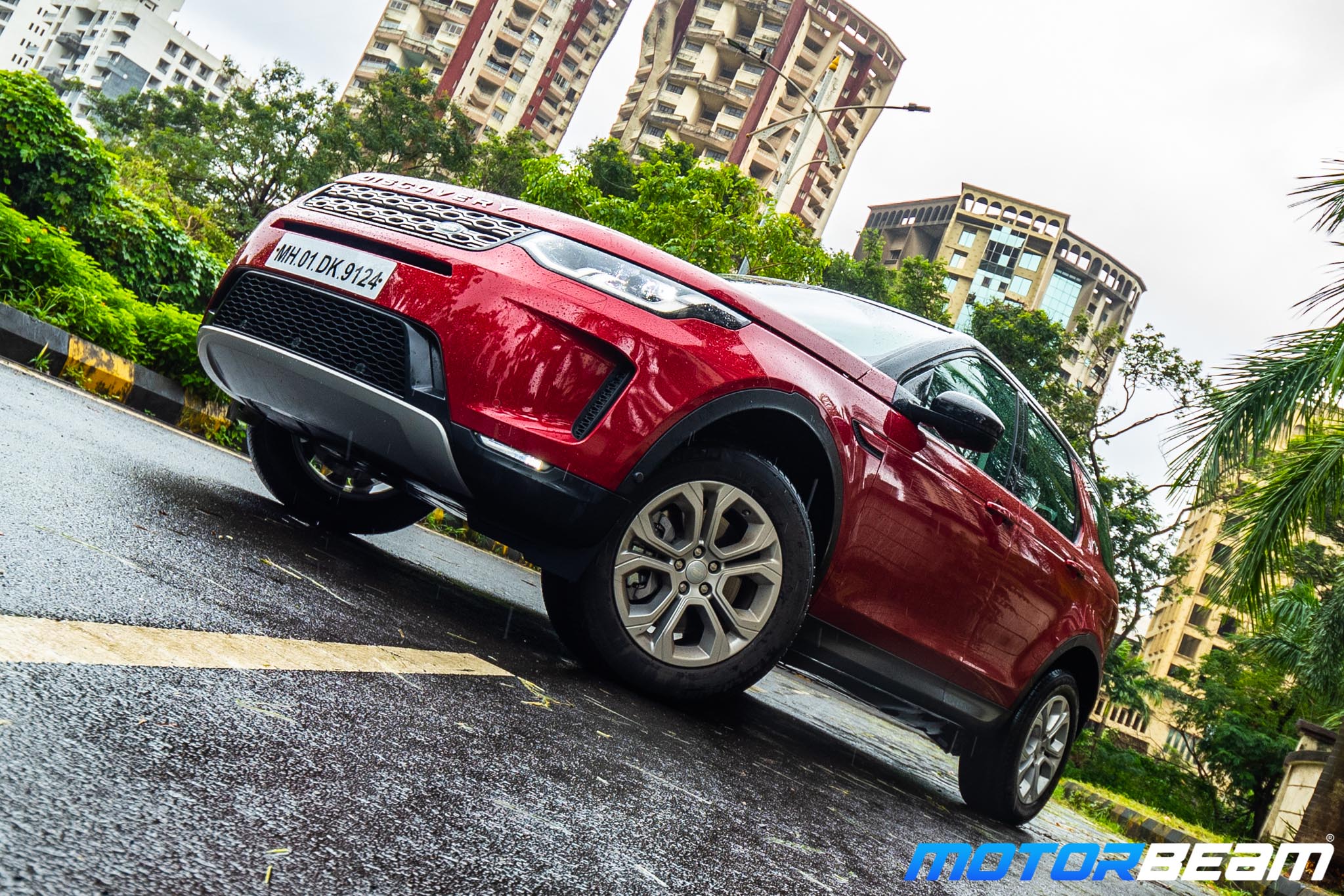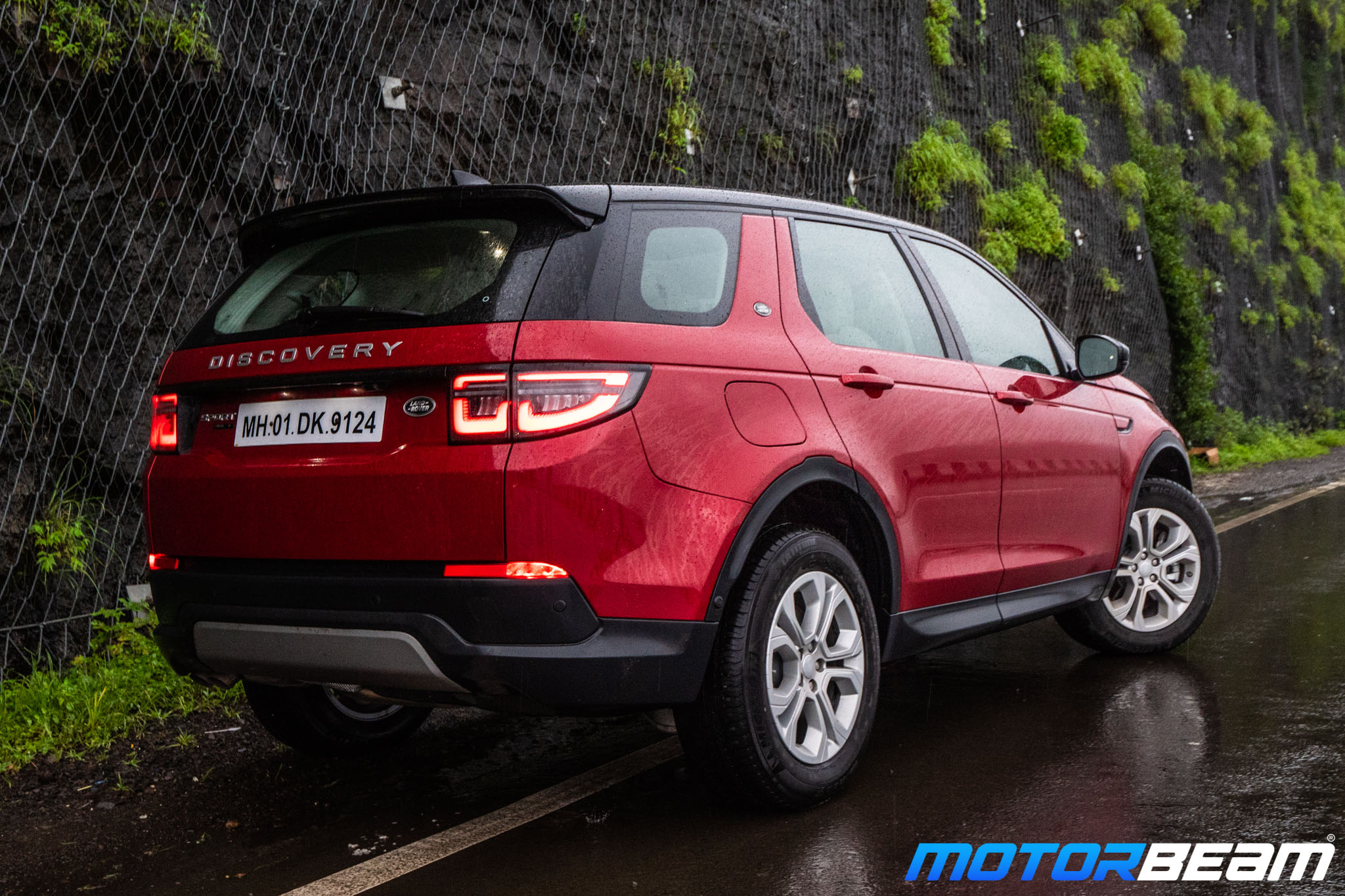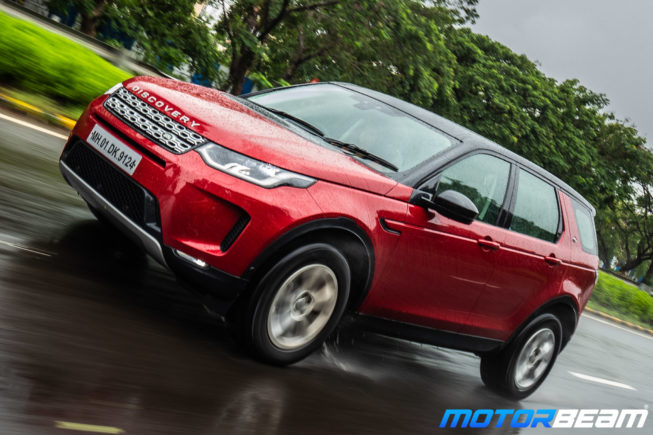
2020 Land Rover Discovery Sport Review
Car Tested: 2020 Land Rover Discovery Sport D180S; Road Test No. 1221; Test Location: Mumbai
Price OTR Mumbai: Rs 72 lakhs
The 2020 update brings the practical Discovery Sport in line with other SUVs in terms of design, features and luxury
The first generation Land Rover Discovery Sport was launched in 2014. The aptly named Discovery Sport sat below the Land Rover Discovery, and was more dynamic. However, as years passed by, this segment started heating up with some stellar competition, and the design of the Discovery Sport started to look a tad dated. Come 2020, and Land Rover has given it a design and feature update that they hope would put this car to the front of your shortlist if you are looking to buy one.

Exteriors – If you take one look at the exterior of the previous generation Discovery Sport and this new one, the theme of updation is clear- more sophistication. When this car was launched back in 2014, SUVs were just about to explode in terms of popularity. With this increased popularity, came a higher need to make the SUV designs more urban and contemporary, to suit the needs of a wider audience. The 1st gen Discovery Sport was more conservative than what the market wanted.
While the previous generation Discovery Sport looked more macho, the latest gen looks premium, sporty and more attractive overall
The major changes are at the front and the back. The front gets the slimmer headlamps that Land Rover first introduced with the Velar. The sporty trims get more curves and vents in the bumper, adding to the sophistication. The slimmer headlamps go a long way in making the look sleeker.
Since this version doesn’t change anything structurally, the side remains the same right down to the body-coloured C-pillars. The fuel cap is now a square, and is larger to accommodate for the plug-in hybrid system this car can come with. Apart from that, any changes you see with the side is due to the differently designed lights.
New lights along with more scoops and air vents all around give the Discovery Sport a sharp and smooth look
The rear is largely the same. The circles in the tail lights that looked like eyes are now replaced with LED lines, which suit this car more. The previous version did have some sweet looking twin exhaust pipes, which are now hidden underneath the car, even in the sporty versions. Since the design language is supposed to resemble the bigger Discovery, the rest of the design remains unchanged.
Interiors – The interior of this car is by a large margin, the largest update to this car. This interior has been given the standard JLR interior treatment. The AC vents are now much better integrated with the flow of the interior, plastic sees itself replaced with glass, and the look is much more clean now. One thing to note is that the distinctive transmission knob that presents itself is now replaced with a conventional shifter, however.
The major changes are inside the cabin giving the Discovery Sport a much more upmarket and luxurious feel
The touchscreen infotainment takes the centre-stage. All models get the 10.25-inch touchscreen display, paired with the dynamic dials which are quite a nice idea and are easy to use while driving. The touchscreen could do with higher frame rates and smoother animations, but is a breeze to use. Android Auto and Apple Carplay are present if you wish to connect your phone. The only drawback is that while driving, the gloss from glass can be glaring if the sun hits it at a certain angle.
Add these changes to a more premium steering wheel, a nice digital driver’s display, and more premium materials than last time, this interior is a league ahead of its predecessor for sure. The layout is super clean and premium, and has worked in other models of the JLR lineup. I see no reason why anyone would be disappointed with this interior. It really is crazy how 6 years makes so much difference.
The 5+2 layout of the Discovery Sport makes it much more practical than the similarly priced Range Rover Evoque
The rear has nothing much to talk about. Being the size it is, there is plenty of legroom, and headroom. The back row, however, is best described as fit for children. On the inside, the car aims to be quite the practical package, at least more practical than its more contemporary looking counterpart, the Evoque.
Performance – The Land Rover Discovery Sport is only offered with 4-cylinder engines (not just in India but globally too although 3-cylinder hybrids are offered abroad as well). In India, the petrol engine is the more powerful one while our test car happened to be the D180S which is the 2.0-litre diesel that outputs 180 PS of power at 4000 RPM and 430 Nm of torque at 1750 – 2500 RPM. Globally Land Rover offers a more powerful D240 which as the name suggests, produces 240 PS of power. For the price, the more powerful engine should have been offered in India as well.
The diesel engine is high on refinement, offers decent fuel economy and performs best in its mid-range
Updated to comply with BS6 emission norms, the diesel engine is more refined now and is a smooth operator but not the smoothest when compared to the oil burners from Mercedes and BMW, more so when you get past the mid-range. Drivability is good with the mid-range being the strong suit of this motor as it feels the most eager between 2000-3500 RPM, post which power tapers off sharply in the top-end, the motor redlining close to 4500 RPM. 0-100 km/hr takes 10 seconds while the top speed is 200 km/hr.
The Land Rover Discovery Sport uses a 9-speed torque converter gearbox which is the same unit that also does duty on the Jeep Compass. It gets a Sport mode on the gear lever but there is no manual mode as such (even when you click on the paddles, it won’t hold onto a gear). Gear shifts are smooth but not the fastest when it comes to giving you a downshift but the gearbox is willing to upshift quick enough to get you in top gear at speeds as low as 75 km/hr, thereby improving fuel efficiency which is around 10-12 km/l (the tank capacity is almost 70-litres!).
Driving Dynamics – The Land Rover Discovery Sport might have got a facelift but it’s more than just a nip and tuck as the platform is all-new, the updated model sharing its underpinnings with the second-generation Evoque (the powertrains are shared too and both cars also cost quite similar). Underpinned by the Premium Transverse Architecture, the new platform lends the Discovery Sport improved handling as the new model feels a lot more composed (the all-wheel-drive system uses torque vectoring to ensure the car stays in line). The steering is quite heavy which takes some effort at lower speeds but offers you great feedback at higher speeds. There is body roll, as this is a heavy car (at 2000+ kgs) with the suspension on the softer side, lending this SUV an amazing ride quality over most surfaces, only being caught out by sharp bumps.
The updated platform improves the Discovery Sport’s handling tremendously and also gives it outstanding high-speed stability
The Discovery Sport might be the entry-level Land Rover but carries the genes of the brand with pride as it’s hugely capable off-road. The car feels rugged to drive and has a slew of driving modes too but there is no Sport mode (other than the regular Terrain modes in all other Land Rovers, it also gets Comfort mode which is the default mode and Eco mode which should have been swapped out for a Sport mode). The driving position is very commanding as you sit high up and get a good view of what’s around while the water wading capacity is a good 600 mm.
Verdict – The 2020 Land Rover Discovery Sport is a solid update to the existing model. The interior has gotten a comprehensive upgrade and the exterior updates are minor, but make up where the previous one fell behind its competition. Now, some might feel that this design could do with a bit more spice, and maybe is a tad too ‘vanilla’ for an SUV design in 2020. Then again, we should remember that, for the audience with that sort of a taste, Land Rover has you covered with the 2020 Evoque.
This car is made to sit parallel to the Evoque. Clearly, the Discovery is more oriented towards the audience with a simpler taste with focus on practicality. The gear selector being more conventional, and the overall design being less on the edge as compared to the Evoque, are all subtle decisions by Land Rover to appeal to such an audience. The car aims to be, and is more practical as compared to the Evoque with the 5+2 seating giving you added flexibility too. The Discovery Sport is the entry-level Land Rover and also the most sold model from the British brand because it brings a unique experience to this over-crowded segment.
What’s Cool
- Subtle and handsome design
- Feature-loaded cabin that is extremely practical
- Refined and frugal diesel engine
- Exceptional ride quality and high speed stability
What’s Not So Cool
- D240 tune should have been offered at this price
- Extremely tight last row
Alternatives – Range Rover Evoque, Mercedes-Benz GLC, BMW X3, Volvo XC60, Lexus NX
2020 Land Rover Discovery Sport Specifications
- Engine: 1999cc, 4-Cyl, Diesel
- Power: 180 PS @ 4000 RPM
- Torque: 430 Nm @ 1750-2500 RPM
- 0-100 km/hr: 10.1-seconds
- Top Speed: 201 km/hr
- Transmission: 9-Speed AT
- Fuel Consumption: 10-12 km/l
- Fuel Type: Diesel
- Tyre Size: 235/60/18 (Front & Rear)
- Suspension: Passive Suspension (Front & Rear)
- Brakes: Disc (Front & Rear)
- Safety: 7 Airbags, ABS with EBD, Brake Assist, ESC, Hill Assist
2020 Land Rover Discovery Sport Dimensions
- Overall length x width x height: 4597 mm X 2173 mm X 1727 mm
- Wheelbase: 2741 mm
- Fuel Tank Capacity: 70-litres
- Kerb Weight: 2087 kgs
Further Reading –
Land Rover Discovery Sport Ingenium Review
2015 Land Rover Discovery Sport Review
Land Rover Experience – Taking The Discovery Sport Off-Road





